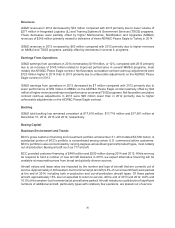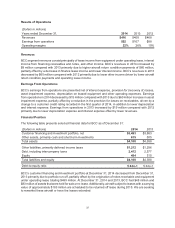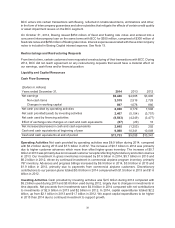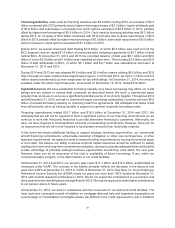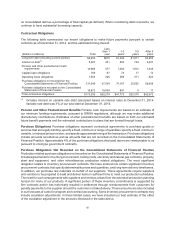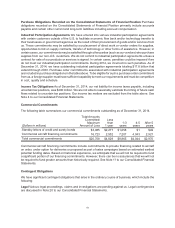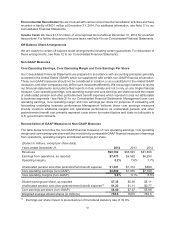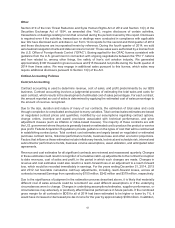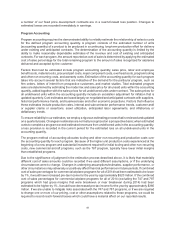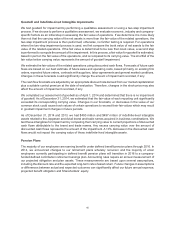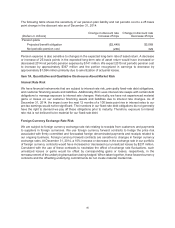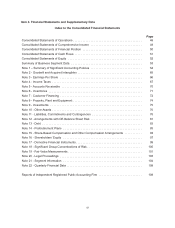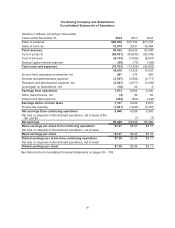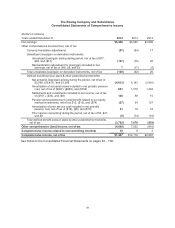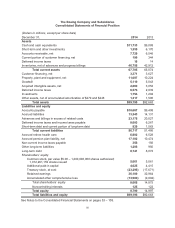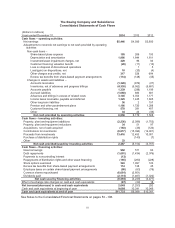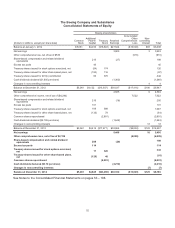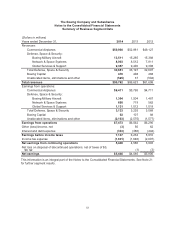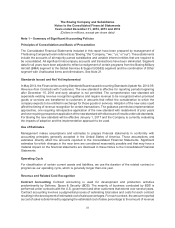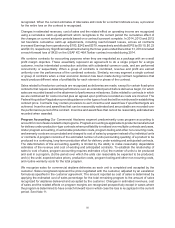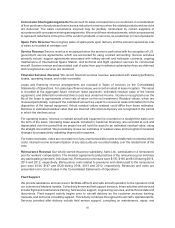Boeing 2014 Annual Report Download - page 58
Download and view the complete annual report
Please find page 58 of the 2014 Boeing annual report below. You can navigate through the pages in the report by either clicking on the pages listed below, or by using the keyword search tool below to find specific information within the annual report.
46
The following table shows the sensitivity of our pension plan liability and net periodic cost to a 25 basis
point change in the discount rate as of December 31, 2014.
(Dollars in millions)
Change in discount rate
Increase 25 bps
Change in discount rate
Decrease 25 bps
Pension plans
Projected benefit obligation ($2,449) $3,068
Net periodic pension cost (266) 329
Pension expense is also sensitive to changes in the expected long-term rate of asset return. A decrease
or increase of 25 basis points in the expected long-term rate of asset return would have increased or
decreased 2014 net periodic pension expense by $141 million. We expect 2015 net periodic pension cost
to increase by approximately $367 million and the portion recognized in earnings to decrease by
approximately $1,084 million primarily due to amortization of actuarial losses.
Item 7A. Quantitative and Qualitative Disclosures About Market Risk
Interest Rate Risk
We have financial instruments that are subject to interest rate risk, principally fixed-rate debt obligations,
and customer financing assets and liabilities. Additionally, BCC uses interest rate swaps with certain debt
obligations to manage exposure to interest rate changes. Historically, we have not experienced material
gains or losses on our customer financing assets and liabilities due to interest rate changes. As of
December 31, 2014, the impact over the next 12 months of a 100 basis point rise in interest rates to our
pre-tax earnings would not be significant. The investors in our fixed-rate debt obligations do not generally
have the right to demand we pay off these obligations prior to maturity. Therefore, exposure to interest
rate risk is not believed to be material for our fixed-rate debt.
Foreign Currency Exchange Rate Risk
We are subject to foreign currency exchange rate risk relating to receipts from customers and payments
to suppliers in foreign currencies. We use foreign currency forward contracts to hedge the price risk
associated with firmly committed and forecasted foreign denominated payments and receipts related to
our ongoing business. Foreign currency forward contracts are sensitive to changes in foreign currency
exchange rates. At December 31, 2014, a 10% increase or decrease in the exchange rate in our portfolio
of foreign currency contracts would have increased or decreased our unrealized losses by $237 million.
Consistent with the use of these contracts to neutralize the effect of exchange rate fluctuations, such
unrealized losses or gains would be offset by corresponding gains or losses, respectively, in the
remeasurement of the underlying transactions being hedged. When taken together, these forward currency
contracts and the offsetting underlying commitments do not create material market risk.


